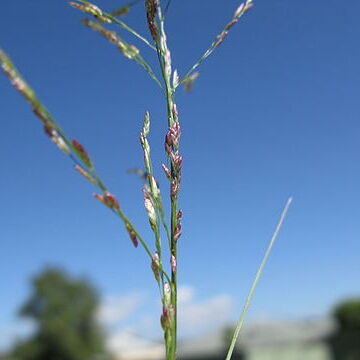Tufted annual, up to 700 mm high; erect or geniculate. Leaf blade up to 250 x 3.57.0 mm, margins eglandular, scabrid; ligule a fringe of hairs. Inflorescence an open panicle, side branches spreading; pedicels long and slender; spikelets tending to be condensed to branches. Spikelets 3.0-4.5 x 1.0-1.2 mm, oblong, laterally compressed; rachilla persistent, lemmas and/or paleas breaking up from base upwards; glumes shorter than spikelet, 1-nerved. Florets many; lemma 1.3-1.7 mm long, entire, 3-nerved; palea keels scabrid; anthers 3, 0.2-0.3 mm long. Flowering time Dec.-Mar. Caryopsis oblong.
Link and its close relative E. neomexicana Vasey, both with the grain furrowed as in E. capillaris, are rarely and sporadically adventive with us. Both differ from E. capillaris in their proportionately smaller and more congested infl and 7–15-fld spikelets with larger lemmas (1.7+ mm). E. neomexicana is robust under favorable conditions, 5–12 dm, with lvs 3–10 mm wide, and commonly has a ring of yellow glands below each node of the stem and glandular pits on the sheath (at least along the keel). E. mexicana averages smaller, seldom over 5 dm, with lvs 3–6 mm wide, and lacks the glands.
A grass. The stems are 90 cm long and can be erect or leaning over. The leaves are 26 cm long and 6 mm wide. They are flat and are rough above. The flowering arrangements are 38 cm long and 20 cm wide. The spikelets are tinged with purple or grey.
Annual to 70 cm. Leaves linear-lanceolate, margins scabrid. Spikelets in an open panicle, 3.0-4.5 x ± 1 mm.

